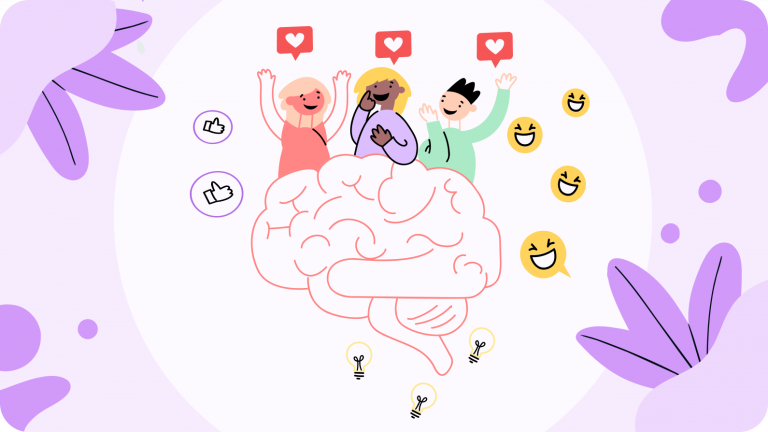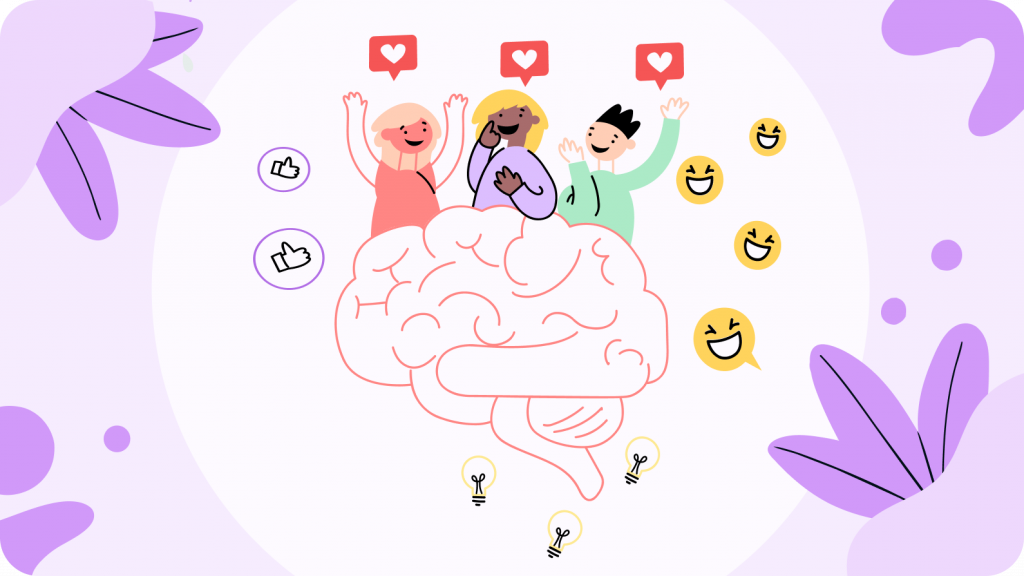Have you ever had an uneasy feeling that you’re missing something? An unhappy suspicion that in social interactions, your words and actions stand out – but for all the wrong reasons?
Recently, I caught up with Claire, a fellow Neuroplastician, and we delved deep into the latest research and tools she uses when helping clients who feel their intuition in social situations is lacking.
Claire had been working with her client, Mark, to enhance his interpersonal skills and social well-being. Mark shared his challenges with recognizing emotions in others, saying, “I just don’t have that sixth sense to pick up on social cues.
Claire knew that by explaining the neuroprocesses behind intuitive behavior would help Mark understand and develop a strategy that worked.
“Neurons that fire together wire together” is a famous quote attributed to renowned neuropsychologist Donald Hebb.
This statement encapsulates Hebb’s theory of neuroplasticity and learning, which proposes that when neurons repeatedly activate together, the connections between them strengthen. This connection is the first stage of creating new thinking patterns, in neuroscience terms new neural pathways enabling new skills to be developed, including social intuition.
Claire shared with Mark the science behind how humans socially understand emotions. She introduced Mark to the parts of the brain, the mPFC-to-RSC brain pathways which regulate social processes and effectively balance inhibitory and excitatory neurotransmitters. Also, she explained how information transfer occurs for social and emotional processing ensuring optimal functioning of neural circuits involved in social cognition, allowing for accurate interpretation of social cues, emotional responses, and appropriate social behaviors.
She also explained the role of default mode network (DMN), which plays a crucial role in social and emotional processing.
It plays a role in various aspects of social processing, such as understanding others’ perspectives, empathizing, and forming judgments about social situations. The DMN facilitates introspection, theory of mind (understanding others’ mental states), and mentalizing processes, which are crucial for navigating and interpreting social interactions.
Therefore, disruptions or abnormalities in the DMN can affect social functioning and interpersonal relationships.
Dautan’s research involved subjects observing emotional states, like stress or relief, in others, leading to efficient processing of social and emotional information. This not only enables accurate emotional and social recognition but also reinforced the significance of the mPFC-to-RSC brain pathway.
By influencing this pathway, the ability to perceive emotional states in others, such as stress and relief, is changed.
For neuro-enthusiasts, this research illuminates what having a “sixth sense” looks like. It’s about noticing what parts of the brain enable unconscious efficiency in detecting emotions in social settings. The mPFC-to-RSC brain pathway.
Once Claire had described the physical structure of the brain, she dived into the neurotransmitters, the chemical messages that are involved in discerning the meanings in different social interactions.
Mark learned about the role of somatostatin (SOM) neurons, which release the inhibitory neurotransmitter Gamma-aminobutyric acid (GABA), Mark realized this balancing act between feeling insecure when being excited or holding his tongue in social situations was Mark’s root cause of feeling socially stressed and learning how the brain processes this information was a real relief.
He now felt he could be more emotionally in control and start reading the room to become more socially intuitive by understanding the mechanics of the brain. Justin this still doesn’t make sense to me.
Claire and I discussed how revealing this knowledge helped clients like Mark, improve their social skills by explaining how to recognize and respond to emotional cues, manage their own emotions effectively, and build stronger, more empathetic relationships with others, by listening, not reacting.
Claire and I kept chatting and I shared my recent experience with another client, who was also struggling in social situations but in a different way from Mark.
My client Sarah, often misinterpreted friends’ jokes as criticism, leading to conflicts, and felt overwhelmed in group settings, which made her feel isolated. She came to me for advice and to find a clear and simple solution.
Sarah often found herself on the defensive, misinterpreting the intentions behind her friends’ jokes, which frequently led to unnecessary conflicts and strained relationships. In group settings, the overwhelming flood of emotions left her feeling isolated and disconnected from those around her.
I shared a number of tools with Sarah, one of which was how to best ask open-ended questions. This enhanced her emotional and social intelligence giving her time to pause and analyze her reflex emotional contexts, which improved her interactions.
I was also excited to share the 5 tip trick with Sarah!
This involves 5 ways to hack the brain’s automatic reflex to reply to a question or respond to a comment in a social situation. It works like this. Use these 5 prefixes to improvise your sixth sense:
When you…
I feel…
Because…
In future…
Is that OK?
An example I shared how Sarah could use the 5 tip trick when chatting with her friend Mike, who was fond of telling jokes. I suggested Sarah could say to Mike “When you make a joke, I feel I miss the punch line, Because English is my second language. In future would you mind if I ask you to explain the punch line if I look confused? Is that OK Mike?”
I was happy and proud to share with Claire that as Sarah’s emotional intelligence blossomed, she found herself approaching social situations with a newfound sense of ease and understanding.
No longer burdened by misinterpretations and insecurities, she forged deeper connections with others, fostering a sense of belonging and acceptance within her social circle. With ongoing coaching and support, Sarah discovered the power of self-awareness and emotional regulation in shaping her interactions and experiences.
Sarah emerged through this process to become stronger and more resilient than ever before. Armed with a deeper understanding of her emotional landscape, she embraced life’s complexities with a sense of curiosity and confidence.
As she continued to navigate the intricacies of how the human brain makes connections. Sarah has now become a beacon of hope and inspiration for others at her office and in her social circle to navigate their own journey toward emotional well-being.
Understanding the intricate connections between different brain regions and the role of neurotransmitters in governing social functions is key! And Neuroplastician armed with coaching tools can help their clients by guiding them toward targeted interventions and practices that promote optimal brain functioning.
For instance, techniques like brain-based coaching and cognitive behavioral therapy (CBT) are utilized to reframe negative thoughts and even interoception and mindfulness exercises. Neuroplasticians also assist clients in building new social habits to improve emotional regulation.
Additionally, neurofeedback can be employed to monitor and adjust brain activity, ensuring the most effective neuroplasticity tools are applied. This knowledge not only aids in personal development but also fosters deeper, more empathetic social interactions.
Ultimately, it leads to stronger connections and support networks within work colleagues, families, and even society as a whole!
Co-Authored with Elizabeth Gould, author of Feeling Forwards















